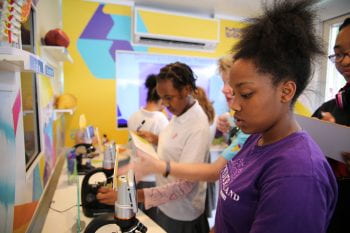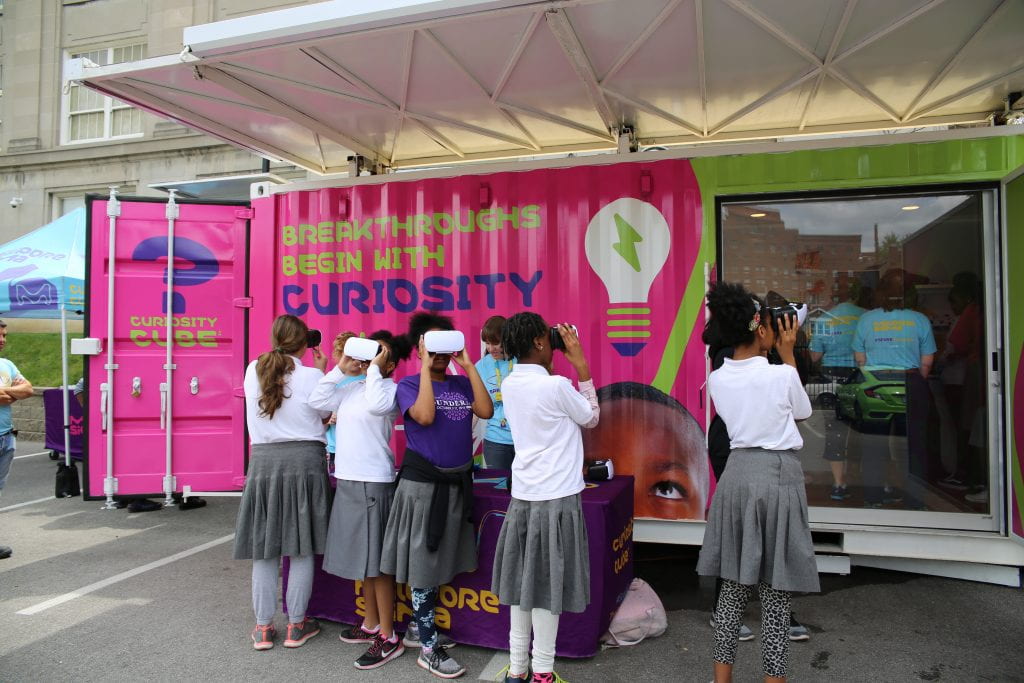I see red! I see green! I see purple!
Sporting virtual reality headsets, a group of seventh-graders from Hawthorn Leadership School for Girls, are sharing the different colors they see as they take a virtual tour of brain cells.
“I haven’t experienced anything like this before,” Cailyn McGraw says. “Seeing the cells and the cells inside of the cells is really neat. I’m so glad they brought this to Hawthorn.”
The students are working their way through the Curiosity Cube, a mobile science lab
developed by MilliporeSigma, that’s been traveling around the country. Hawthorn is the first of a handful of stops in the St. Louis area. The retrofitted shipping container houses three stations with experiments focused on the “superpower of cells” in the body.
Guiding the students through the various experiments are employee volunteers from MilliporeSigma. But on this day, the overwhelming favorite spot is outside – at the table with the virtual reality goggles.
“It’s cool to use technology and science together,” Daria Abston explains. “I can learn a lot from this. It’s teaching me things I didn’t know.”
Hands-on science ignites passion in young minds
Washington University’s Institute for School Partnership played a major role in the experiments conducted in the mobile science lab. They draw from the Curiosity Labs program – a library of interactive science experiments created by ISP curriculum coordinators. The age-appropriate lessons are delivered to classrooms around the world by MilliporeSigma employee volunteers.

To immerse even more young minds in the world of science, MilliporeSigma launched the Curiosity Cube in 2017.
“It’s exciting to see these experiences being made available to even more students,” says Victoria May, executive director of the ISP. “Too many students get to high school without the confidence to tackle STEM subjects or an awareness of the opportunities waiting for them in STEM fields. That’s why it’s important to make inroads with students when it matters most—in elementary and middle school.”
Last year, the Curiosity Cube engaged more than 38,000 students in 85 communities around the U.S. This year, it will travel to more than 100 communities in the U.S. and Canada, aiming to reach 50,000 students.
Founded in 2015, Hawthorn is sponsored by Washington University. It’s Missouri’s first single-sex charter school and serves girls in middle and high school. It aims to bring a rigorous STEM-focused education to women of color — a population that is underrepresented in the fields of science, technology, engineering and math.
May 2018 | by, Myra Lopez
